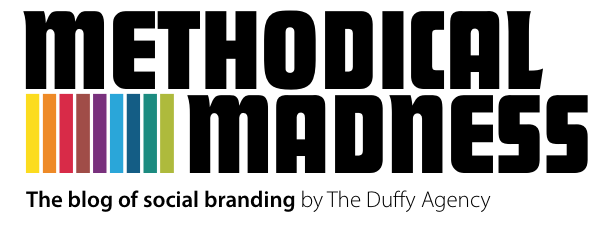When to DM and when to @
 Tuesday, October 20, 2009 at 5:04PM
Tuesday, October 20, 2009 at 5:04PM 
Welcome
to Twitter Tuesday. Every Tuesday we will post about Twitter. Stop by
for advice and how to's for marketing professionals. Every other week
we will post our AppQuest Edition featuring a review of twitter
applications.
It’s the difference between looking like a n00b and looking like a pro
In our previous post entitled “These are the twrules”, rule #10 is: “Don’t have a huge conversation.” It’s always good to communicate with the people you follow on Twitter. You can make new business connections, find an excellent resource or make new friends. I’ve done all three through Twitter. It’s very easy to start chatting with people and the more you use the site, the more this will happen. Just remember that it isn’t a chat room or instant messenger.
Twitter is a broadcast system where you send out a message for everyone to hear. Imagine Twitter as your local television station. They broadcast the latest episode of “30 Rock” and anyone watching will see the episode, but so will anyone else searching for the words “30 Rock.” This is the essence of Twitter. Anyone following you can see your message and so can anyone searching for the keywords in your tweet. Now imagine that anyone that sees your broadcast can respond to it with their own message. This is called an @ reply.
By using an @ symbol and the Twitter user’s name, you can reply to their message. As such, you can have a simple conversation. So if I ask, “Does anyone know a good steak restaurant?”, anyone that lives in my area can contact me with an “@stefanhy you should try Mando.”
And I might reply with “@username Thanks.” Since my tweet and my follower’s tweet have been broadcast to all of our followers, and if our respective followers aren’t following both of us, they are only seeing a fragment of the conversation. That’s why a conversation shouldn’t go much beyond this.
If I need further information about location, prices, reservations or opening hours, as a good tweeter, I would move the conversation to direct messages (DM) that only the two of us can see. DM’s are best used when asking someone a question that the general population doesn’t need to be aware of. If I’m asking @maydbs if she’s going to debaser for lunch, it’s not really a question everyone needs to see, especially my followers who aren’t in the Malmö area.
Any direct remark that is only useful to you and the responder should always be a direct message. Any tweet that is business related should probably be a direct message. Also, use DM’s for setting appointments, giving someone a notice, planning events or confirming personal information.
These aren’t rules set in stone. It’s more of a general guideline. Like most things, the more you use Twitter, the more you’ll get a feel for the do’s and dont’s. How you use Twitter and how you communicate with others can greatly effect your follower count and how people view you. If you feel like you’re having too many instant messenger style conversations, odds are you probably are. Be vigilant of how you use Twitter and you’ll discover that your experience will be more beneficial and rewarding.
What are your rules for using @replies and DM's?
Stefan Halley is the Digital Project Leader for The Duffy Agency. He loves to talk about social media and won't shut up about Twitter.



Reader Comments